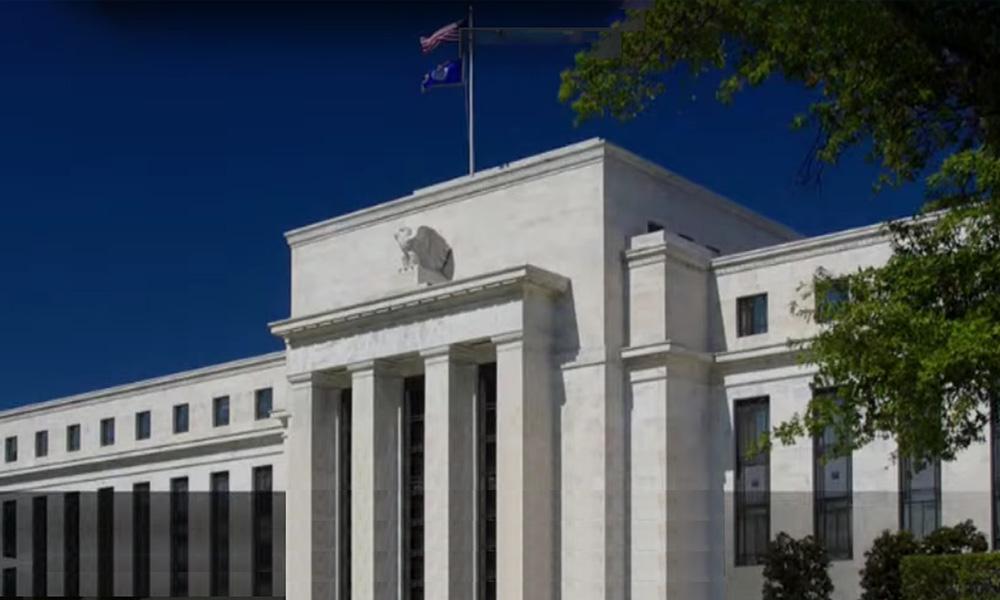Does the Fed not need data to cut rates? The surprising truth behind the consensus.
2025-10-29 20:53:05
The market is largely focused on the Federal Reserve's interest rate decision early Thursday morning. A Fed survey in October showed that 92% of respondents (including 38 economists, strategists, and fund managers) expect the Fed to cut interest rates by 25 basis points at this meeting, and 84% believe that there will be another rate cut in December. 54% predict that there will be a third rate cut in January next year. Respondents generally expect a cumulative rate cut of 100 basis points over this year and next, with the federal funds rate falling to 3.2% by the end of 2026.
Given the severe lack of economic data as a basis for interest rate cuts, why do most people still believe that the Federal Reserve will begin a rate-cutting cycle?

Interest rate cut expectations: Labor market pressures dominate judgment
The formation of this expectation for an interest rate cut is closely related to the Federal Reserve's trade-off between its dual mandates. Although September's inflation data remained resilient—the U.S. Bureau of Labor Statistics reported that the Consumer Price Index (CPI) rose 3% year-on-year, a slight increase from 2.9% in August, and the core PCE price index rose 3.0% year-on-year, both above the Fed's long-term target of 2%—signs of a cooling labor market are attracting more attention.
James Knightley, chief international economist at ING Group, points out that the risk of corporate layoffs is gradually emerging. Amazon recently confirmed plans to cut approximately 14,000 corporate jobs, and the labor market is becoming a more pressing concern for the Federal Reserve.
It is worth noting that industries such as oil have recently been laying off employees. The essence of layoffs is that the marginal returns on human resources invested in the industry are decreasing, and may even be unable to cover marginal costs. This also indicates that the industry is contracting. If leading companies in the industry have started to lay off employees, it means that the overall profitability of the industry is declining. This does not require much data support; just look at the leading companies to understand.
This assessment aligns with the view of Oxford Economics, whose report points out that analysts generally believe the risks posed by a cooling labor market are more pressing than persistent price pressures. Therefore, even if inflation fails to reach its target, a 25-basis-point rate cut should still be implemented. In fact, the Federal Reserve began its rate-cutting cycle in September, lowering short-term interest rates by 25 basis points to a range of 4% to 4.25%, setting the tone for subsequent policy adjustments.
From the perspective of policy transmission logic, Michel Lanelli, vice president of TransUnion, explained that interest rate cuts can reduce borrowing costs, thereby alleviating the debt burden of borrowers and stimulating credit activity. There are already early signs that credit activity has increased, which has the potential to support economic recovery.
Decision-making dilemmas: data supply disruptions and political interference
However, the challenges facing this interest rate cut decision far exceed those of the norm. As of October 24, the US federal government shutdown had entered its 24th day, marking the second-longest shutdown in history. This directly led to a delay in the release of the September jobs report, the suspension of most data collection work by the US Bureau of Labor Statistics, and may even affect the normal release of November inflation data.
Federal Reserve Chairman Jerome Powell admitted that there is "no risk-free option" for the current policy path. Due to the lack of official data, the Fed has been forced to turn to alternative data such as state-level unemployment claims reports and the ADP National Employment Report—which shows that U.S. private sector employers lost 32,000 jobs in September. However, the effectiveness of these data is far less than the official "gold standard." As Guy LeBass, chief fixed income strategist at Jenny Montgomery Scott, put it: "Flying blindfolded in a blizzard without backup instruments is absolutely not the right way to formulate monetary policy."
The lack of data further amplified policy disagreements. The survey showed that while most people expected an interest rate cut, only 66% of respondents believed "interest rates should be cut," while 38% explicitly opposed it.
Opponents are represented by Richard Bernstein, CEO of Richard Bernstein & Co., who stated that the current financial environment is close to historically loose levels, with GDP growth remaining in the 3.5% to 4% range, financial asset prices rising sharply, and inflation still far above the target. He argued that "in normal times, the Federal Reserve would never choose to cut interest rates," implying that political factors may interfere with the independence of decision-making.
Among the supporters, Alan Sinai, chief economist at Decision Economics, called for a larger rate cut, arguing that "the weak labor market and government shutdown are exacerbating the risk of recession, and it is necessary to take larger rate cuts sooner rather than later."
Assessments of policy risks are also polarized: 42% of respondents are concerned that the Federal Reserve is cutting rates too much, while 40% are worried that it is not cutting rates enough. Lindsay Pigza, chief economist at Stiglitz, warned that hastily cutting rates without sufficient data could further exacerbate policy mistakes if subsequent inflation and employment conditions do not support it. "Federal Reserve officials cannot draw clear conclusions about anything at the moment, and should theoretically pause policy adjustments and wait for more information."
Market and Economy: Opportunities and Concerns Coexist
If the interest rate cut is implemented, its impact will gradually permeate all aspects of the economy. For ordinary people, Dmitry Silva, Managing Director of Rims Asset Management, points out that the transmission cycle of interest rate changes typically takes 6 months to 1 year, during which time interest payments on credit cards, car loans, and mortgages will decrease, and debt management pressure is expected to ease.
Small businesses, as a core engine of job creation, will also benefit from lower borrowing costs, alleviating the operational pressure caused by previously high interest rates. However, a WalletHub survey shows that although another rate cut could save consumers more than $1 billion, more than half of respondents believe that a 25-basis-point rate cut will not have a substantial impact on their lives.
But if 25bp doesn't make a difference, what about continued interest rate cuts? For businesses, if the interest rate breakdown decreases significantly, their financial statements will look much better, and business owners will be more proactive in evaluating their companies and making future plans.
Market expectations for the economic outlook are characterized by "short-term caution and long-term optimism." Surveys show that economic growth forecasts have been revised upwards five times consecutively (since the announcement of reciprocal tariffs in April). Respondents predict that US GDP growth will be 1.9% this year, rising to 2.2% in 2026 and reaching 2.3% in 2027; the unemployment rate is expected to rise to around 4.5% next year, while the inflation rate will gradually decline, reaching approximately 3% by the end of this year and falling to 2.6% in 2027. Although tariffs are considered the primary risk to economic expansion, nearly two-thirds of respondents indicated that their impact on inflation is currently lower than expected. However, most believe this is due to "the impact not yet being fully realized" and "companies not fully passing on costs," and long-term risks still require vigilance.
A booming stock market is a double-edged sword and needs to be protected by interest rate cuts.
Regarding the stock market, nearly 80% of respondents believe that artificial intelligence-related stocks are overvalued, with an average valuation premium of over 20%. Therefore, they expect the stock market to maintain its current level by the end of this year, with only a slight increase of 5% next year. The accumulated risk of the stock index may also be one of the reasons why the Federal Reserve chooses to cut interest rates as a precaution. If the excessively large cumulative increase meets the tight monetary policy, there is a high possibility of a stampede of funds, leading to a repeat of the 2008 crisis.
Because of the US 401(k) plan, the state of the stock market directly affects the consumption tendencies of individuals and businesses. During a stock market frenzy, interest rate cuts are unlikely to accelerate the index. Instead, they may prompt investors who are afraid of heights to exit the market after realizing the benefits. At the same time, maintaining a loose monetary environment allows the stock market to undergo a healthy adjustment at high levels while waiting for companies' profits to improve.
Summarize:
The lack of data will affect the Federal Reserve's interest rate decisions, but many market economists are still betting on the Fed to cut rates. The considerations behind this are certainly not just economic data, but a combination of factors from various angles.
At the same time, if interest rates are cut, the dollar index may open up downward space, while also injecting liquidity into the global economy, giving other countries' economies some breathing room.
However, while the market has a clear expectation of the future path of interest rate cuts, the Federal Reserve's internal policy considerations remain highly uncertain. Powell emphasized that data before the shutdown showed that the economy "may be on a more robust track than expected," echoing the assessment of economic resilience by some officials.
.
The minutes of the September meeting revealed significant divisions within the Federal Reserve. At that time, 11 of the 12 voting members supported a 50-basis-point rate cut, but several participants objected to a large rate cut, arguing that a gradual adjustment of 25 basis points should be adopted.
Based on current economic signals, most analysts believe that subsequent interest rate cuts will return to a more conventional range.
For the Federal Reserve, facing a lack of data and multiple risks, each interest rate adjustment is like walking a tightrope. Powell's statement that "there is no risk-free path" is both an honest assessment of the current policy dilemma and a indication that in the near future, the Fed will continue to search for the most suitable direction while closely monitoring economic data, listening to market feedback, and adhering to its original policy objectives.
For the market and the public, the waiting and maneuvering during this interest rate cut process will continue to affect all aspects of economic life.
- Risk Warning and Disclaimer
- The market involves risk, and trading may not be suitable for all investors. This article is for reference only and does not constitute personal investment advice, nor does it take into account certain users’ specific investment objectives, financial situation, or other needs. Any investment decisions made based on this information are at your own risk.





















